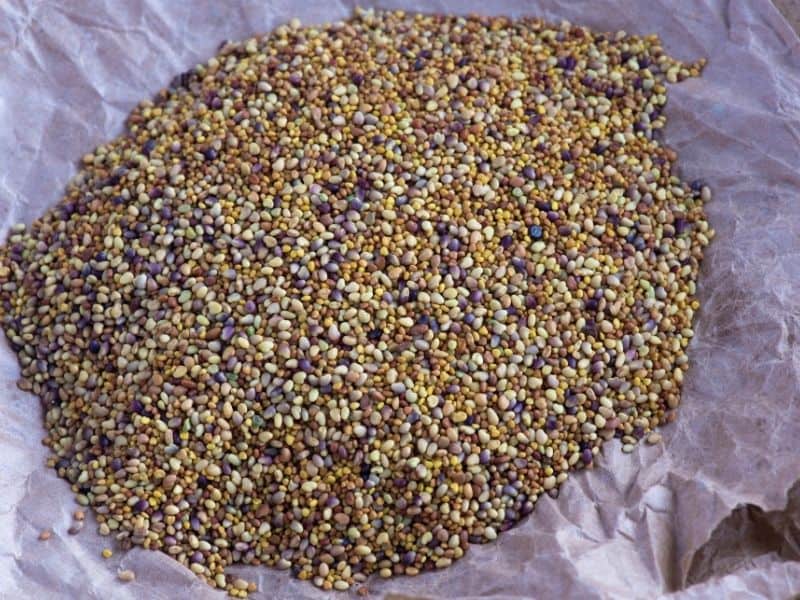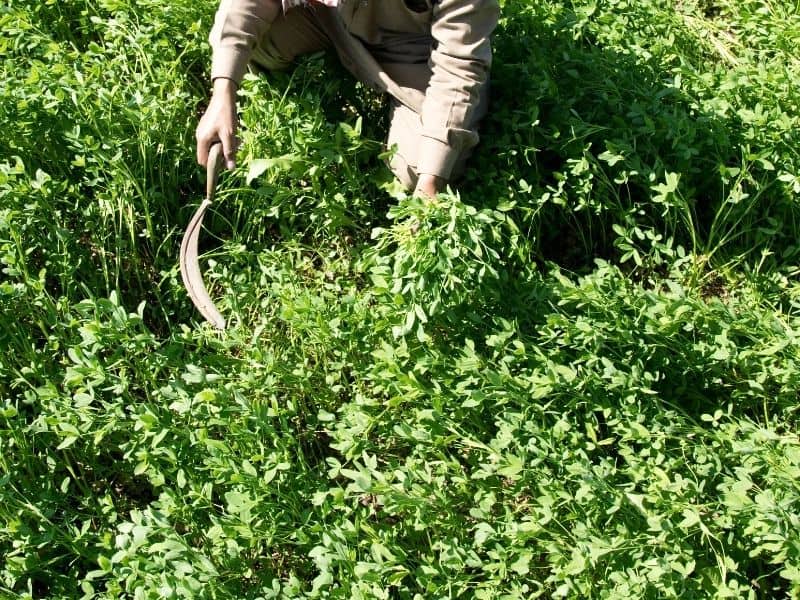There are three main ways you can improve the soil in a garden bed, You can use organic mulches to cover the bed, work in soil amendments or you can grow cover crops. All of these methods work well and each has its advantages but cover cropping garden beds seems to be the one people consider the least because they know the least about it.

Cover crops planted in late summer and fall are an affordable way to build better soil for your garden. Here’s why and how to get started.
What Is A Cover Crop?
A cover crop is a crop planted in a garden bed to protect the soil from erosion, control weeds, loosen soil, improve the soil by adding organic biomass, and depending on the cover crop it may be used to increase the nitrogen in the soil. Most garden beds can greatly benefit from the use of a cover crop during the time the site is not planted with vegetables.
Two Types Of Cover Crops
Cover crops can be divided into two groups: legumes and non-legumes. The legumes have the ability to fix nitrogen deficiencies in the soil and are a wonderful crop to grow in beds you plan on planting vegetables that require high nitrogen such as tomatoes, peppers, and corn.

Legumes
The best and most common legume cover crops are White and Crimson Red Clover, Hairy Vetch, Alfalfa, Winter Field Bean, and Winter Pea. Some of these crops may work better according to your particular climate, winter temperatures, and soil conditions. Hairy vetch is one of my favorites because of its hardiness, nitrogen-fixing ability, and thick foliage which provides plenty of organic mulch and weed control.

Non-Legumes
Some common non-legume cover crops that provide excellent organic material and weed control are Barley, Buckwheat, Oats, Rye, and Wheat. Out of these, Rye would be my favorite because it is the hardiest and easiest to grow. Some have the advantage of being extremely fast-growing which gives them the preference over others, again it depends on your climate and possibly the condition of your soil.

Drillers
If you’re trying to loosen up hard compacted soil for better drainage by using cover crops you may want to consider root vegetables such as Daikon Radish and Turnips. This is known as bio-drilling and it works well to soften compacted soil and as the roots decompose it leaves open pockets in the soil for the next crop to root down through.

Where To Get Cover Crop Seeds
There a few great seed companies selling cover crop seeds in bulk but I’m a fan of True Leaf Market. They have a huge inventory and great prices and have been in business since 1974. You don’t stay in business that long unless you’re really doing something right!

How To Plant Cover Crops
Most cover crops can be planted by scratching up and leveling out the soil and then the seeds being broadcast around as you would grass seed. Slightly roughing up the soil helps the seeds settle into the soil a little better and can help prevent the seed from being eaten by birds.
Exceptions to this rule would be planting root vegetables and beans as cover crops. These seeds would take a little more time as you would need to plant these seeds, root vegetables need to be about two inches apart and about a half inch deep and beans need to be planted even further apart.

When To Plant Cover Crops
You will want to plant your cover crops at a time when they will be able to get established and grow with some significance before the weather prohibits growth. Usually, this is about four weeks before your first frost date. An exception to this rule is rye as it can be planted right up until the first frost date and still grow well. The trick of course is to plant them soon enough for them to grow as much as possible but not so soon that they have time to go to seed before it’s time to cut them down.
When and How To Cut Down Cover Crops
This may vary depending on which crop you grow and the zone you’re growing in but what is most important is that you chop them down before they seed. Crops that do not winter over can be cut to the ground after the first frost and then let lay as a mulch over winter. Crops that overwinter should be cut at ground level in early spring before they seed, whichever you grow make sure you leave the roots in the ground and cut at the base of the plant. I like to use a string trimmer to cut down the crops, with this tool it’s easy to cut low and you can get through large garden spaces fairly quickly, a clearing sickle works well too.
- Designed for heavy duty clearing and scrubbing of tough vines weeds undergrowth
- Black soft rubber grips and the 9-inch aluminum tube handle
- Razor sharp 9-inch carbon steel straight edge hooked blade provides powerful…
Last update on 2024-07-26 / Affiliate links / Images from Amazon Product Advertising API

Some people like to turn the soil over, mixing the cut-down crops into the soil to break down. I prefer the mulching method which keeps the soil covered helping with moisture retention and weed control.
Cover crops work well for gardens of all sizes and even raised beds, the seeds can be very inexpensive when purchased in bulk and can do wonders for your garden soil. Give cover crops a try and you might just have the best garden ever.




